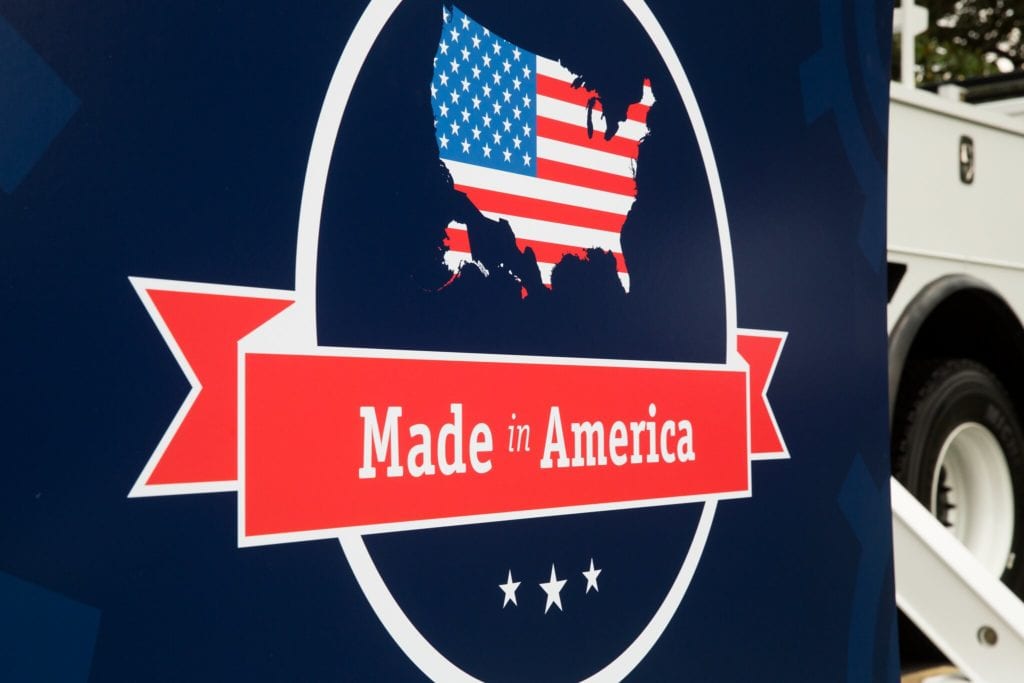Currently, there are a number of news articles, memes, and posts by individuals circulating on social media denouncing products made in China. This pandemic has demonstrated the dangers of outsourcing American manufacturing. Unfortunately, many people mistakenly focus their anger toward China and not the American companies that moved their facilities to China and other off-shore locations. Nor do people blame ill-conceived U.S. policies, and the American buying public who chooses the lowest price (often out of necessity) over quality.
How did we get here?
The United States was once in the vanguard of the Industrial Revolution. Ironically, the United States is rapidly becoming the world’s first “post-industrial nation.” According to “Politifact,” more than 60,000 U. S. factories have closed since 2001, and according to “CNN Money,” 5 million U.S. manufacturing jobs have been lost.
We have become a nation of consumers, not producers. According to an economic journal called “The Balance,” seventy percent of the United States’ GDP is consumption. Juxtapose that with China, where 38.7 percent of their GDP is consumption, according to CEIC.com.

One need look no further than the world’s largest retailer, Walmart, to trace the emergence of Asian manufacturing dominance. An article featured in PBS’s “Frontline” titled, “Wal-Mart & China: A Joint Venture,” written by Sam Hornblower, details how Walmart became the key conduit of Chinese imports into the United States. The article reveals that Sam Walton, who was well known for his “Buy American” campaign, was also the architect of the company’s unpublicized “Buy Asia” program.
“As one retired senior [Wal-Mart] executive explained: ‘Sam wanted everything possible [made] in the U. S., but he was not going to pay [extra] for it to stay. The main thing he asked was: ‘Is it good for our customers?’ If not, we went and made it overseas…In this strategy, Sam Walton was playing catch-up. Sears, Kmart, Target, and JC Penney all had established procurement networks in Asia long before [Wal-Mart] arrived…Even as [Wal-Mart] pushed American suppliers to be more efficient (cut costs), and promoting its “Buy American” program, the company was steadily increasing its purchases from Asian vendors…China loomed large for Sam Walton’s successors in the years following his death…[Wal-Mart] had caught the China bug. In a speech to business schools in the early ’90s, David Glass, who succeeded Sam Walton as CEO, advised students to learn Mandarin Chinese…Privately, long-time U.S. suppliers expressed dismay…”
In the article, one apparel maker, requesting that his name be withheld, said, “They invaded our core business model…[Wal-Mart] seems intent on managing the total product life cycle.”
Duke University Professor Gary Gereffi, stated, “By now, many American manufacturers, such as the apparel suppliers, have little choice but to redefine themselves as ‘branded distributors’ for overseas goods. In other words, instead of making their own products, they use their own brand names to market Chinese-made goods to retailers. They eke out profits by outsourcing production and marketing that production. The process is virtually the final step in the surrender to what calls the [Wal-Mart]-China ‘joint venture.’”
In the mid-2000s, Lou Dobbs had a series on CNN called “Red Star Rising.” Dobbs’ commentary lamented the rapid rise of Chinese economic and military power and the large number of U.S. companies moving their manufacturing to China. He also pointed out that when American companies have their products built overseas, the Chinese companies want full access to the American companies’ intellectual property.
In an article written by Dobbs in 2006, he stated his reporting would now be called “Red Storm.”
Dobbs squarely laid the blame on the current administration’s “failed” policies and multinational corporations who had lost sight of the national interest.
Reasons for bringing manufacturing back to the U.S.

Manufacturing in the U.S. means adhering to a higher standard of safety and quality control. When companies are geographically close to their production facilities, they can exert tighter control of the manufacturing process. It should be noted that the majority of product safety recalls are for products made in China.
Production in the U.S. also means a cleaner environment. Many countries where outsourced manufacturing takes place have poor environmental regulations. Also, transoceanic shipping is a major contributor to pollution.
Not only does manufacturing in the U.S. save companies money on logistics costs, but it also results in shorter lead times in the production process. This increases the ability to successfully weather unexpected market shifts.
One argument against having more products made in America is that the items made here will cost substantially more. That is true for some products, but not for all of them. Currently, many consumer goods are relatively cheap, but many American consumers do not earn a living wage. Bringing manufacturing back to the U.S. would result in higher-paying jobs. This would mean people would have more money to spend and the money would stay here in the United States.
Off-shore manufacturing makes this country less secure. The U.S. buys a wide range of electronic components for military hardware from foreign countries. A foreign adversary could cut off the supply and put the military at risk. Chinese cellphones and network equipment could be used to spy on the U.S. Even worse, the components could be used to sabotage our military equipment.
According to “Wired,” the U.S. military bought over 59,000 IC (integrated circuit) chips destined for installation in mission-critical equipment. The chips turned out to be counterfeits from China. The chips had what is called “backdoor programming,” which meant that during a war, the chips could be hacked, thus disabling a missile, for example. The chips could also be programmed to fail after a certain period of time.
We now rely on China for medical equipment supplies, even medicines. The current pandemic has illustrated the need to make these items here in the U.S.
Our dependence on China is now greater than our dependence on foreign oil. We must rebuild our manufacturing base to ensure our economic future and the security of our great land.











